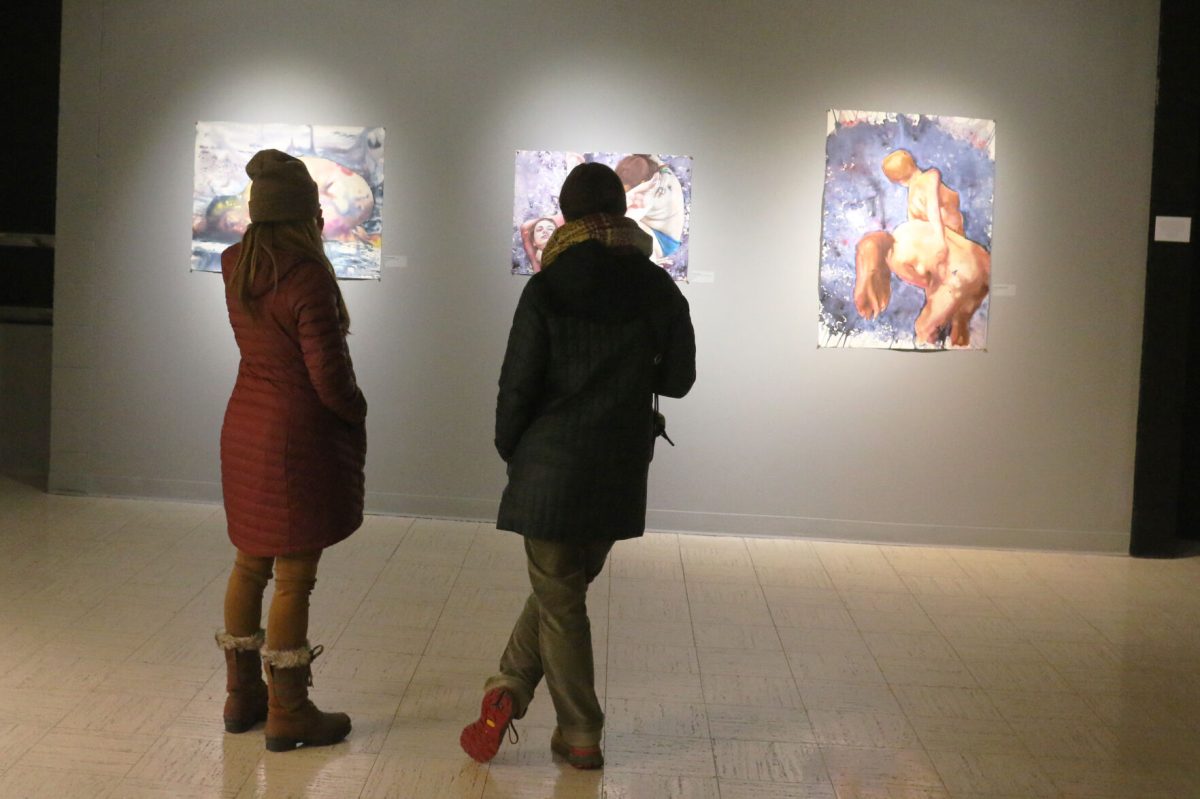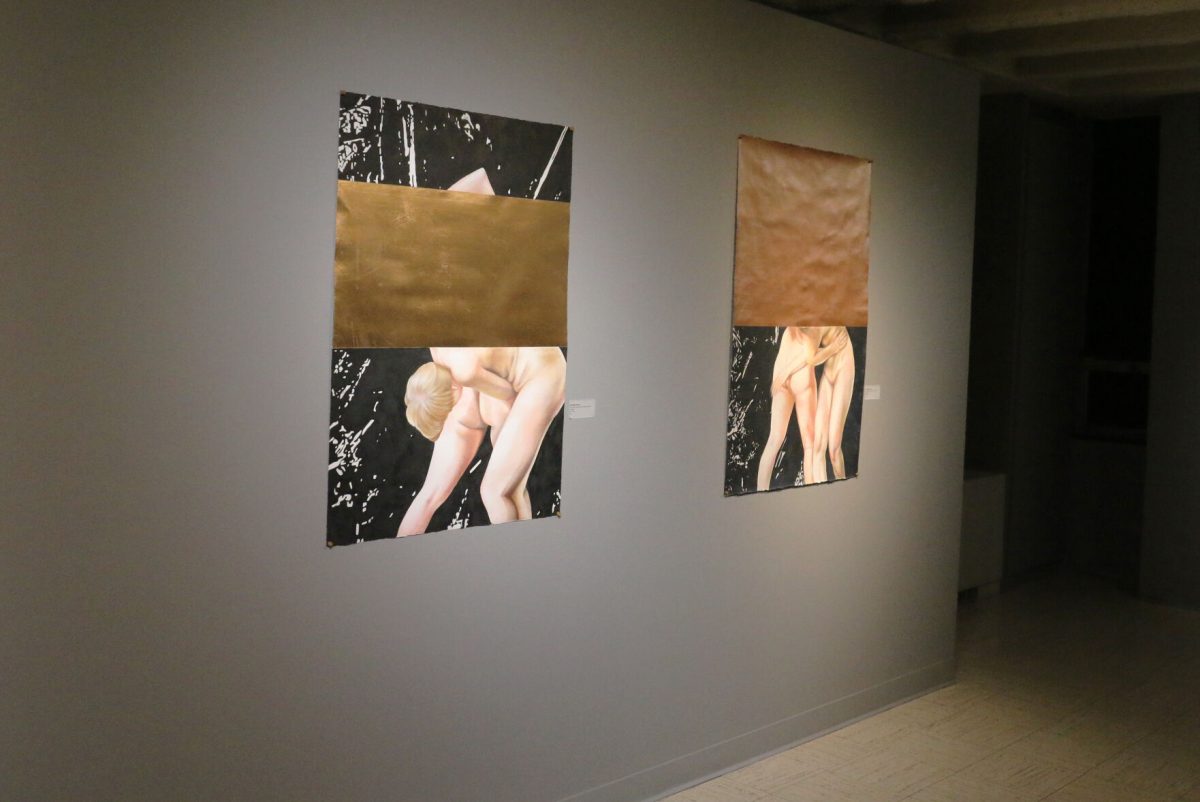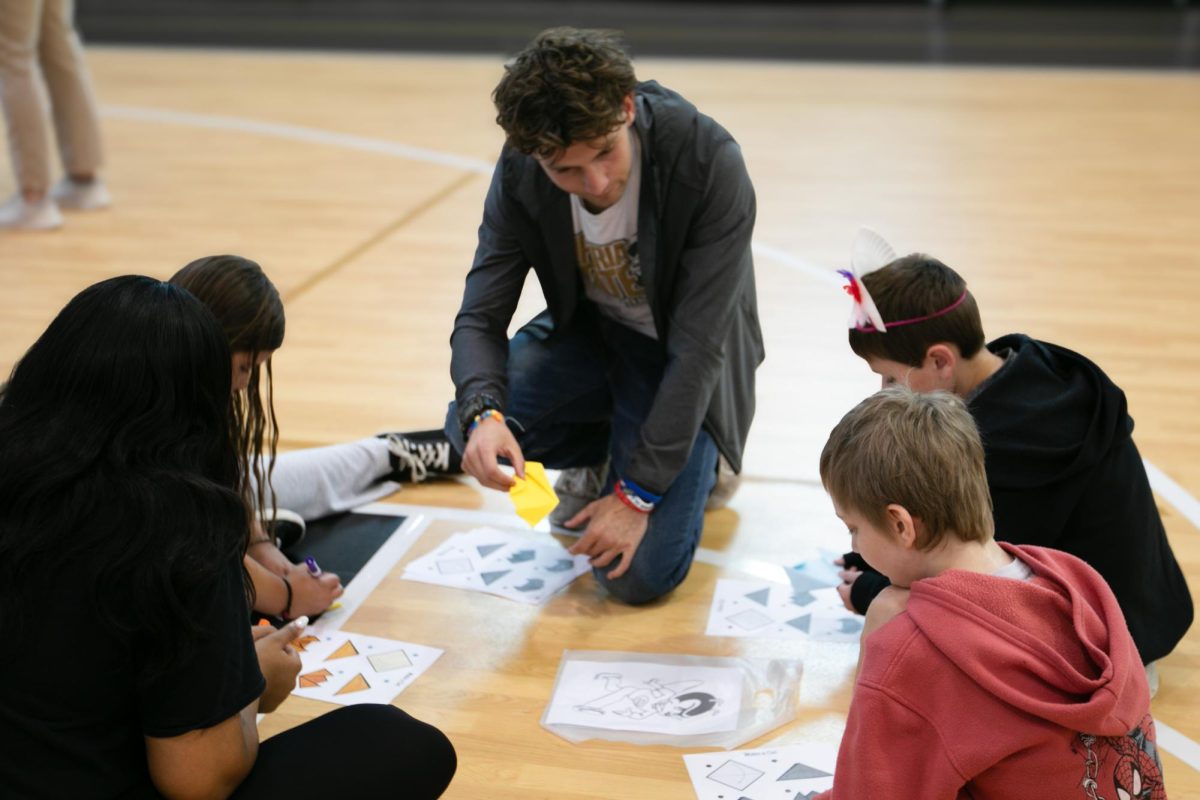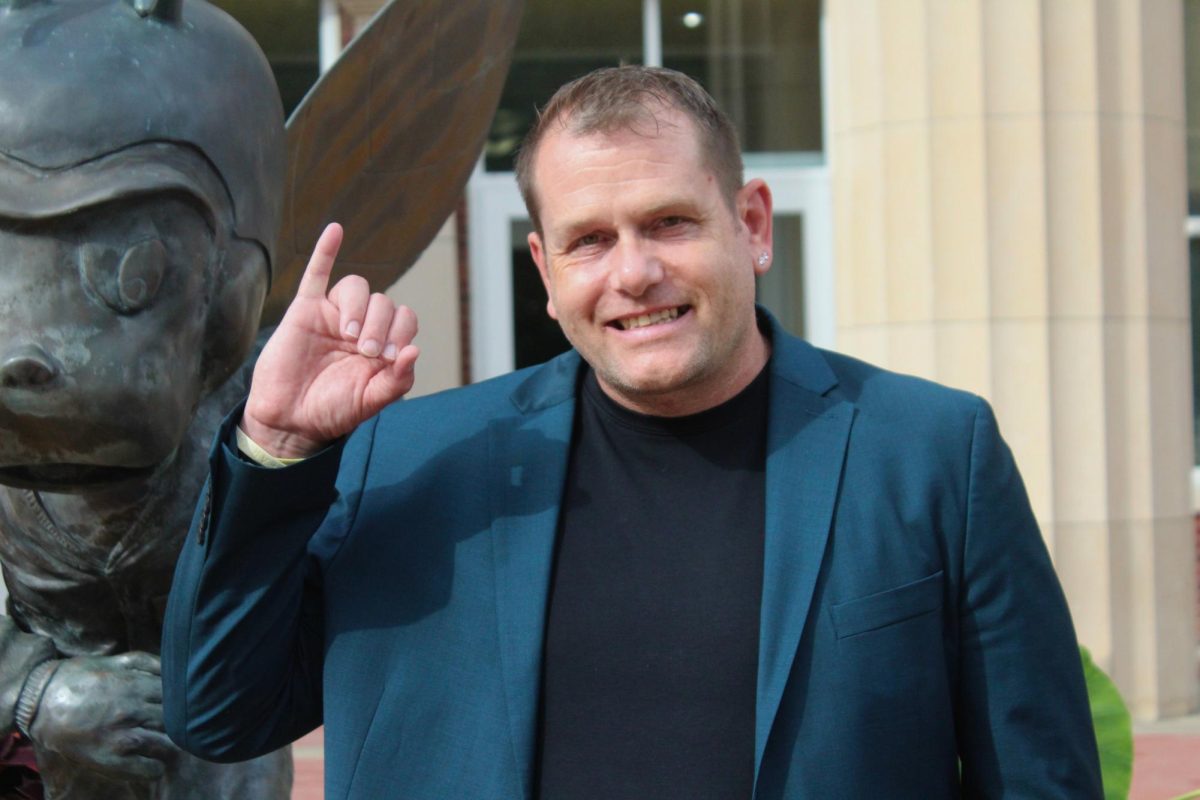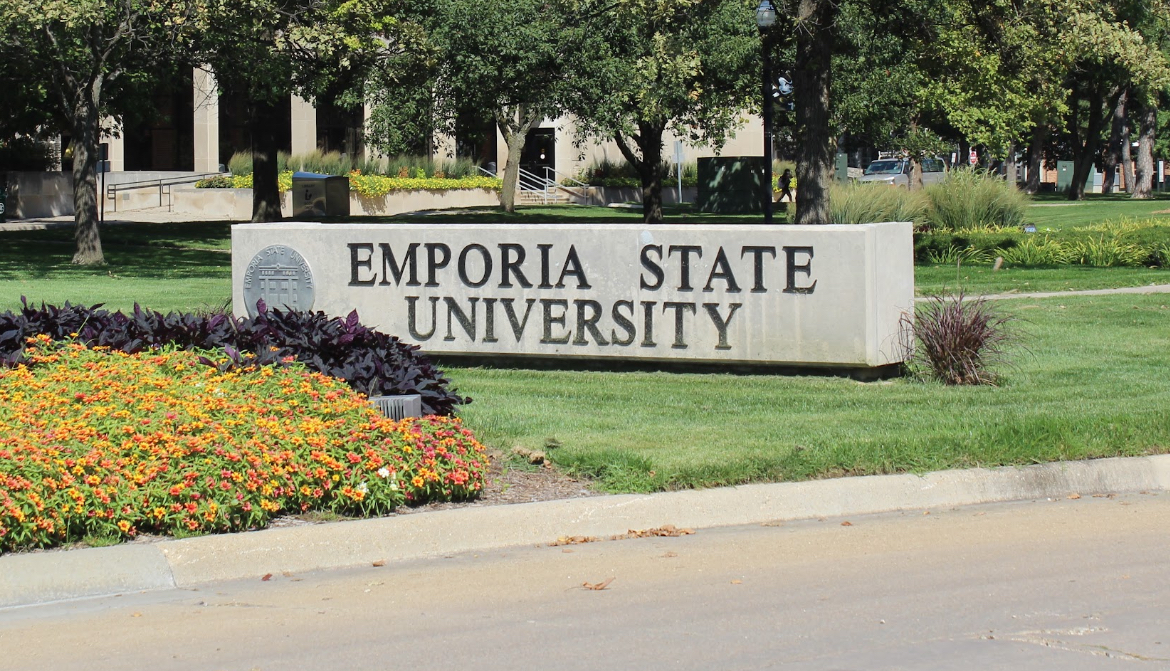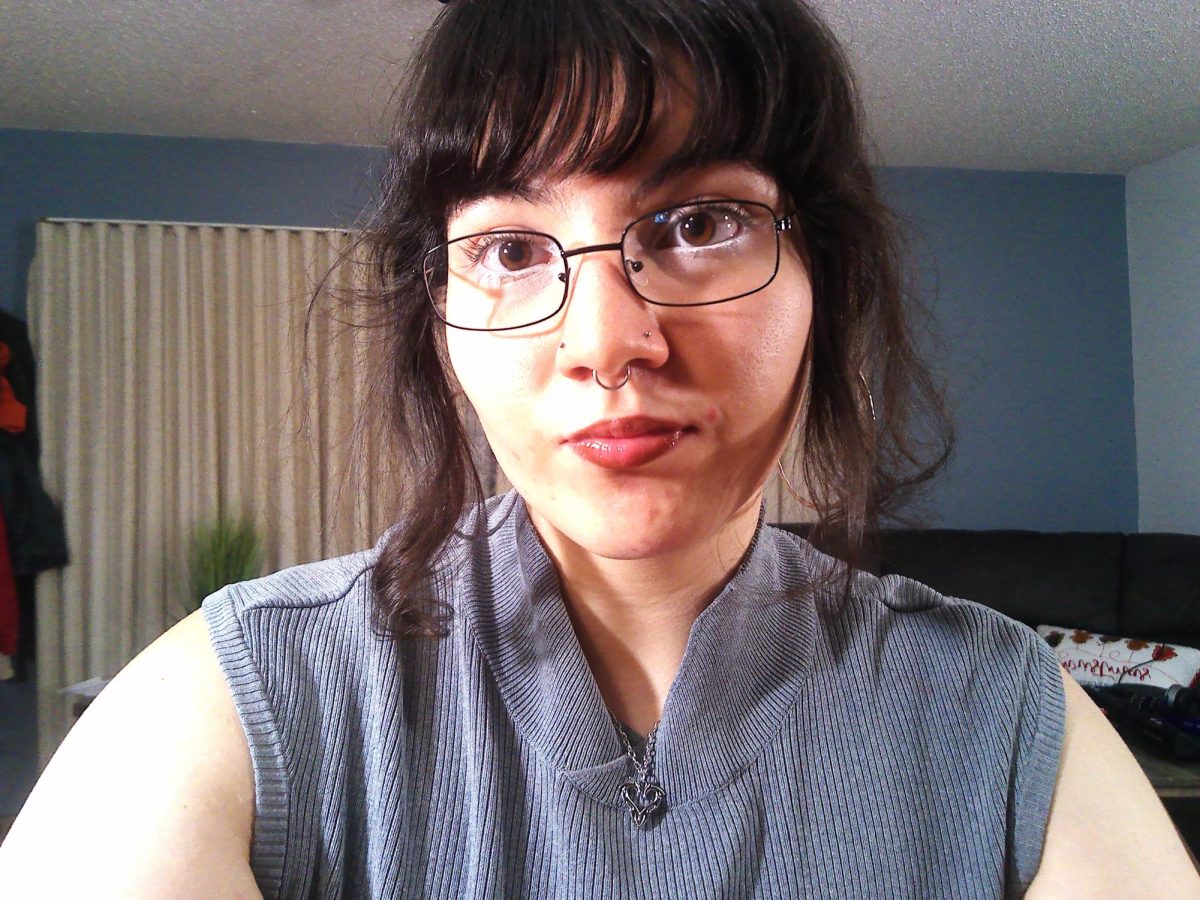In 1863 Édouard Manet pushed viewers’ expectations of art by picturing a nude woman beside two fully clothed men in a contemporary landscape, sparking controversy and challenging audiences with real, modern life.
Over 150 years later, artist Christine Wuenschel challenges theEmporia State community to truly examine what a female body can look like, taking on expectations in today’s society by not only showing traditional bodies, but also representing a transgender woman.
“My goal is to encourage an internal dialogue with the viewer to challenge their notions of the female body and nudity,” Wuenschel, associate professor at Purdue University and full-time artist, said.
Wuenschel’s “Close Contact” exhibit will be housed Jan. 19 – Feb. 28 in Norman R. Eppink Gallery. The show hosts an array of life-sized drawings of females, representing differing body types and identities, including a transgender woman.
“That’s not something that you’d usually see in art,” said Kirsten Brooks, senior art therapy and clinical counseling major. “I like that she had enough confidence to be able to not only draw a model of a transgender woman, but actually display it, as well.”
In her piece “Wresting Game 2,” Wuenschel depicts acisgender and transgender womantogether, showing how society’s expectations of anatomy don’t always line up with what a real woman looks like.
“I wanted to think a little more about female forms that aren’t my idea of a female form,” Wuenschel said. “And I thought that it’s really important to represent a transgender body, because they are female. Biologically they’re not, but I was hoping that in a way, I want them to be able to be thought of as a female body, and again, a representation of a female form, and think about what’s influenced us in our notion of what it means to be female.”
While Wuenschel’s works depict realistic bodies and human forms, some of the drawings have large panels of empty or golden space, blocking out areas around the faces.
“It’s almost like a modesty panel in the wrong place,” Wuenschel said. “It’s revealing the naughty bits and it also creates this way of hiding some of the action, I’m really drawn to the idea of some mystery left, so you know something’s happening back there, like some of the limbs are being pushed and pulled, you know that’s happening, but you don’t see it. It’s a little bit of mystery and a little bit of forcing people to sort of reflect upon themselves, and hiding the wrong parts.”
By showing different identities in her work, Wuenschel is able to bring awareness to people of all walks of life.
“It definitely opens people’s eyes to all the kinds of genres that are out there,” Brooks said. “It’s not just female and male, and we’re all just people. We all kind of look the same.”
Being faced with life-size, nude figures can be a new and daunting experience for viewers in a society where “ideal” and “real” don’t always mean the same thing.
“I think that’s where my whole overarching concept stems from,” Wuenschel said. “I was scared of my own body and I was kind of angry about what’s made me feel this way. So, I think it’s really important for us to explore those ideas and my way of encouraging you to do that is exposing you to them, exposing you to these figures.”
Wuenschel was invited to ESU by associate professor of art Derek Wilkinson, who knew her in graduate school at Arizona State University and thought it would be useful for students to see her work, according to Wuenschel.
“I admire how she uses the figure,” Wilkinson said. “I think it’s refreshing in an era where we kind of operate so much of our life virtually to be reminded of our own bodies and our own mortality and physicality.”
The works in the Eppink Gallery were created using batiking (an Indonesian art form using dying), colored pencil and wax crayon. Colored pencils and crayons were used as a way to push the materials and “heighten them a bit,” according to Wuenschel.
“She’s very detailed,” Brooks said. “I like how from far away, like if you look outside the glass, it looks like she used paint, but when you get up close and you read what she used, it’s colored pencil andmarkers and there was wax that she used in one, I thought that was pretty cool.”
In addition to the colored materials adding a sense of realism, the works provide the viewer with the vibrancy of humanity.
“The way she works is she adds a lot of beauty,” Wilkinson said. “Her drawings are very sensuous, the rich color and soft transitions from different tones. It adds beauty in a time where we’re not seeing a lot of it.”
While the exhibit will be up Jan. 19 – Feb. 28, Wuenschel herself will be in Emporia Feb. 23-28 for an artist talk and the closing reception of the gallery.

